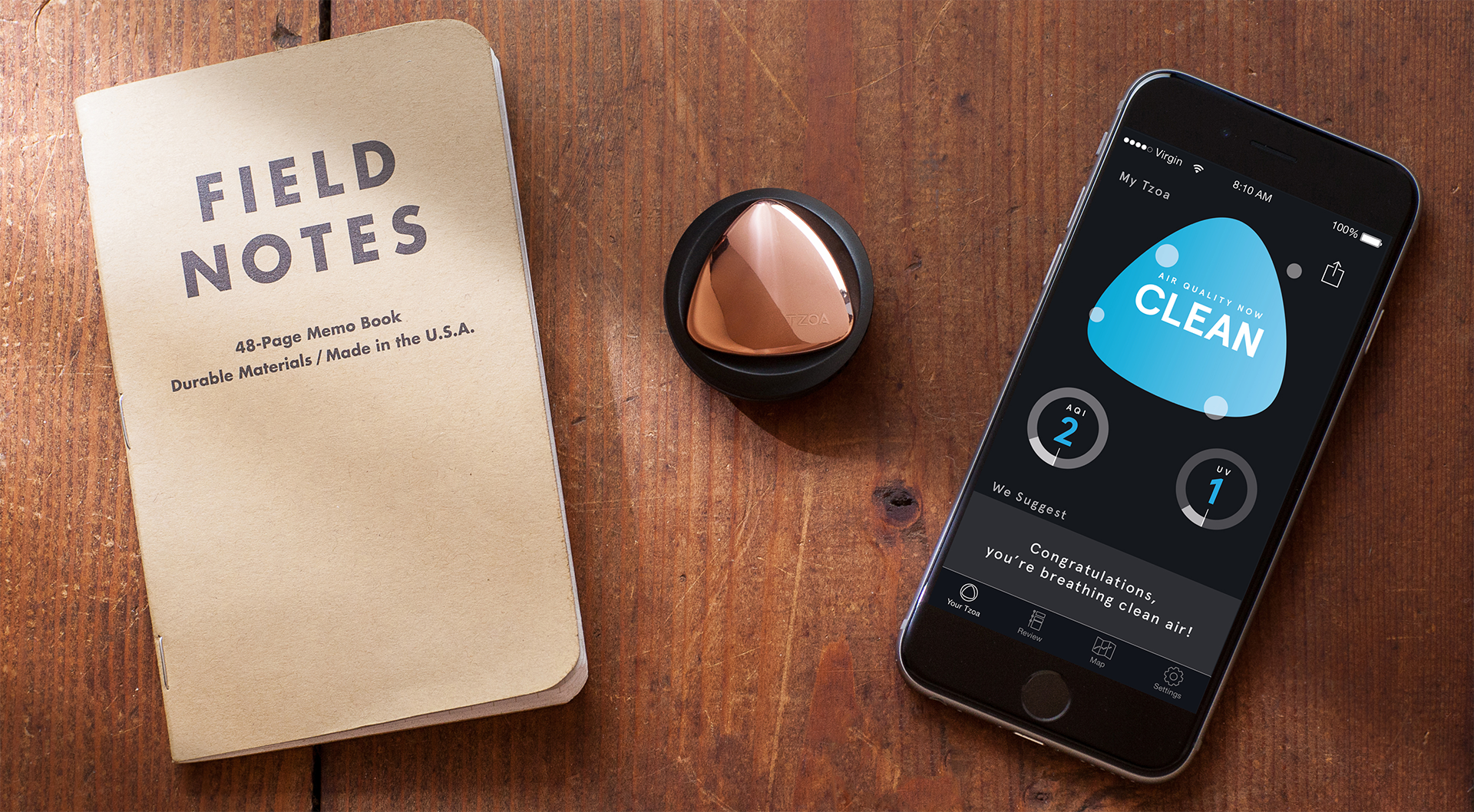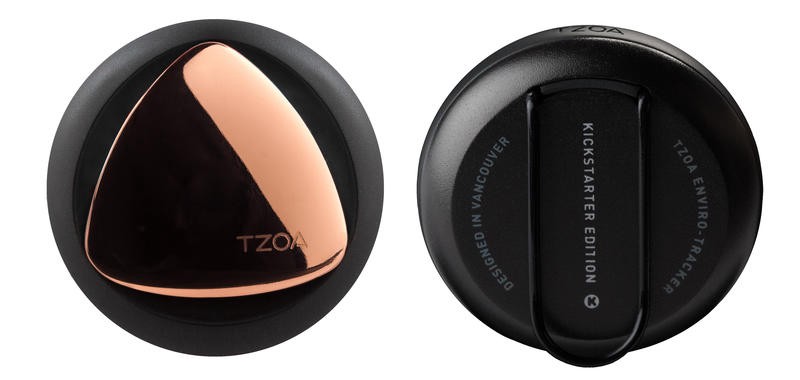

The planet’s single largest environmental health risk isn’t climate change, chemical spills, or nuclear power plants–it’s air quality. Air pollution caused by vehicles, industry, and energy production kills seven million people annually and is responsible for one in eight deaths globally. But a wearable air-quality sensor that collects data from your environment in real time could make life more bearable for those living in the crowded, urban areas that suffer worst from air pollution.
“TZOA is an inexpensive air-quality sensing technology that detects harmful particles in the air,” the project’s founders, Kevin Hart and Laura Moe, explained over email. “It blends together a scientific tool with actionable recommendations in order to better your quality of life; or help with asthma, allergies, and other respiratory/cardiac conditions.”
The TZOA hardware is about the size of a golf ball. It clips onto your jacket or bag, and sucks air through an internal compartment where a 630-nanometer laser detects particles that scatter light. It can also differentiate between PM10 particles like pollen, dust, and mold that trigger allergies and PM2.5 particles like smog, soot, and bacteria that are small enough to penetrate deep into the lungs and cause serious illness.
Internal components detect temperature, humidity, and atmospheric pressure, using the results to adjust the analysis to compensate for the presence of moisture in the air. Light sensors can detect the strength of light and ultraviolet-light exposure–key risk factors associated with common pollutants like ozone and nitrogen oxides.

That data is sent over a Bluetooth connection to your smartphone, where apps for iOS and Android process it and turn it into practical recommendations for your health. Indoors, that can include suggestions like opening windows, turning on air purifiers, or getting your carpets professionally cleaned. Outdoors, where the environment isn’t so easy to control, the focus is on working around hazards and identifying major sources of pollution to avoid.
Following the failure of an ambitious Kickstarter campaign in 2014, the project has now been successfully crowdfunded on Indiegogo to the tune of $50,000. At the time of writing, buying a TZOA will set you back $120, with delivery due in May 2016. But the team is also encouraging $10 donations to fund scientific research around using the devices in India, Bangladesh, and China. The first study using higher-spec research versions is due to begin imminently in India, spearheaded by Michael Brauer of the University of British Columbia, and focused on the health effects of exposure to air pollution caused by burning solid fuels like wood, coal, and animal dung.
Hart and Moe, when asked why they chose to crowdfund the project, said: “TZOA is a citizen movement. It would not work without the participation of people. The best option for us to kick-start a movement is to build a community and leverage the “‘crowd’ for everything from crowdfunding to crowdsourcing data.”
They added, “Our mission is to create a movement for clean air. By increasing awareness of air pollution, our hope is to empower people to lower their personal exposure levels and affect greater policy changes–therefore having a widespread global impact.”


How We Get To Next was a magazine that explored the future of science, technology, and culture from 2014 to 2019. This article is part of our Metropolis section, on the way cities influence new ideas–and how new ideas change city life. Click the logo to read more.
